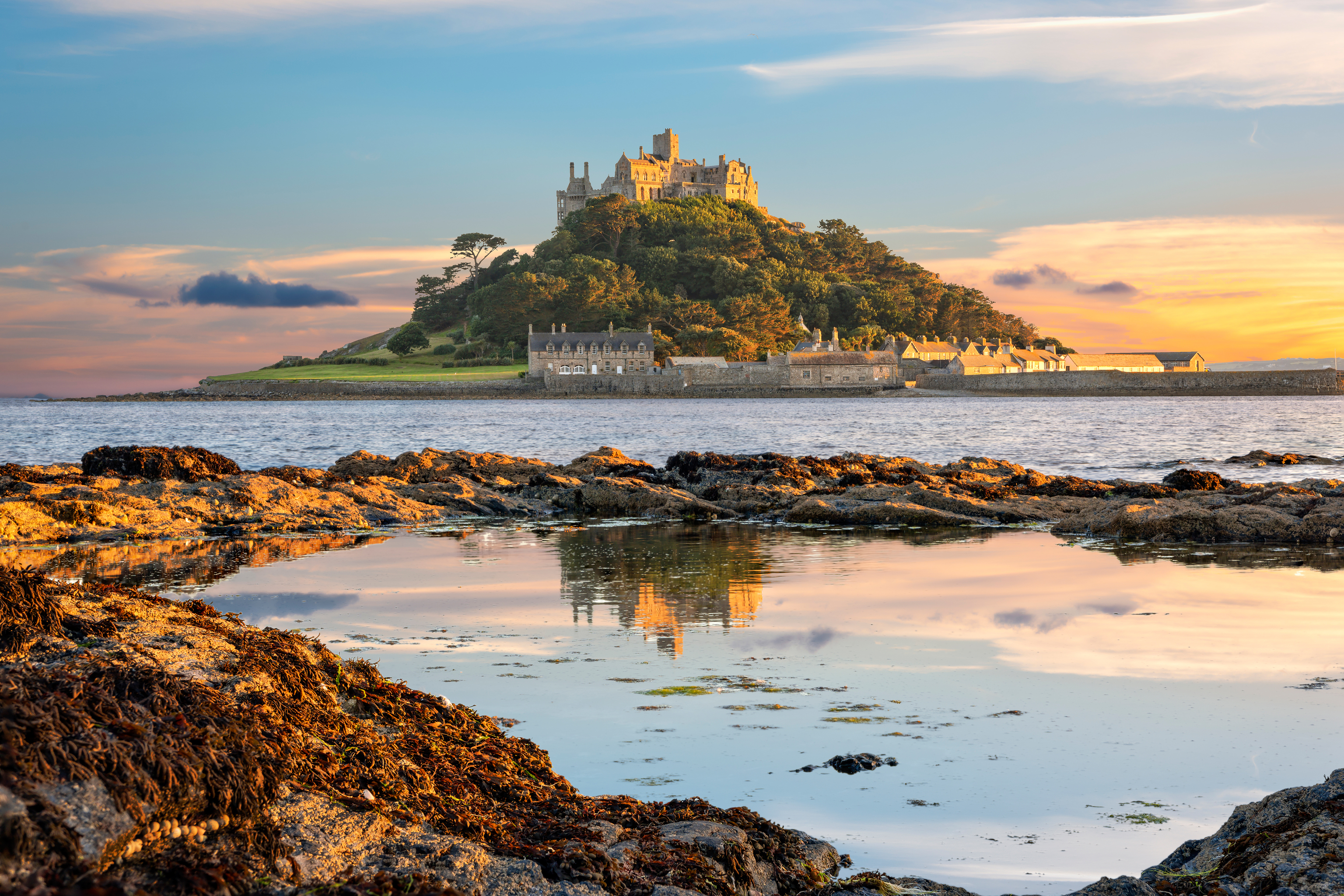- Getaway The city that dressed Europe in pastel blue and became immensely rich
- Discover A tour of the most beautiful canal cities in the world
Buffeted by the sea, the islands have always exerted an irrepressible attraction for the traveler. Whether fictional like Neverland, or flesh and blood like Bora Bora, they draw the most desired atlas to flee and disconnect. These five are in Europe, relatively close to each other, and have the particularity that they are only accessible at low tide, which means an extra dose of adventure.
Mont Saint-Michel
Scene of the highest tides in Europe, the mountain and bay of Saint-Michel is much more than a perfect postcard. Twice a day the tide turns this World Heritage Site into an islet surrounded by the sea. It is often said that the sea grows at the speed of a "galloping horse". As a result the sea level can reach a difference of 14 meters between high tide and low tide. Today, only in exceptional cases does that tide manage to overcome the bridge that connects the island to the mainland, so it is rare that the abbey is totally isolated. However, for centuries the movement of the sea endangered the pilgrims who came every year to this corner of Normandy. Legend has it that the archangel Michael appeared in 708 to the bishop of Avranches, and ordered him to build a church on this rocky islet. The truth is that the abbey was built in the eleventh century.
St. Michael's Mount
The French replica is this British island off the coast of Cornwall crowned by a medieval church and castle. To reach it on foot you have to follow the path of large cobblestones that connects it to the city of Marazion. Be careful, because it is only possible to cross at medium or low tide. Once on the island, home to the St Aubyn family and a small community, you can visit the castle, the subtropical garden, the harbour, the small shops and the Island café. By the way, St. Michael's has been the setting for countless movies, from Dracula to Robin Hood and Never Say Never Again.
St. Michael's, off the coast of Cornwall.SHUTTERSTOCK
Cramond Island
Very close to Edinburgh, in the waters of the Firth of Forth, the visit to the Isle of Cramond is a popular excursion for those looking for a day of peace in nature. This is the case today because during World War II this was a hot zone judging by the bunkers and other military structures that we found on the small islet 1.5 kilometers from the coast. A distance that can be traveled on foot at low tide thanks to a walkway guarded by large anti-ship pylons. A sign clearly indicates the hours when it is safe to cross, but the water level rises so rapidly that clueless visitors often get stuck on the island for a few hours or cross with the water above their ankles. By the way, in summer, the usual tranquility of this corner of Scotland vanishes during the days that the Isle of Cramond celebrates its popular punk festival.
The Scottish island of Cramond.SHUTTERSTOCK
Noirmoutier Island
Located in the Bay of Bourgneuf, the famous Gois Passage is a 4.2-kilometre-long road linking the French island of Noirmoutier with the mainland, roughly at the height of Nantes. This island is also flooded daily by the Atlantic high tide. Actually, today there is an additional bridge, but until 1971 this route was the only way to access the island. Along the way, nine accessible beacons with stairs that serve as a refuge for those who may be surprised by the rising water. By the way, lovers of extreme running can participate every June in a race against time, unique in the world, which is held while the tide rises.
The Pasaje del Gois, in the French department of Vendée.SHUTTERSTOCK
St. Mary's Island
We are now travelling to the east of the UK. A spectacular white lighthouse has presided over the rocky islet of St Mary's since 1898, illuminating the nights of this dangerous coast. It is not the only attractive traveler. In the lighthouse keeper's house, now converted into a visitor center, they explain the biodiversity that houses the island, converted into a natural reserve of marine life. Not far away, following the coast to the north, we find Lindisfarne, another tidal island also known as Holy Island. The castle that the crown dates back to the sixteenth century, but more important is the monastery that was founded on this tiny islet in the seventh century and is considered the place from where Christian evangelization spread through the north of England.
St Mary's Island.SHUTTERSTOCK
You can follow El Mundo Viajes on Facebook, Twitter and Instagram
- Tourism
According to The Trust Project criteria
Learn more

